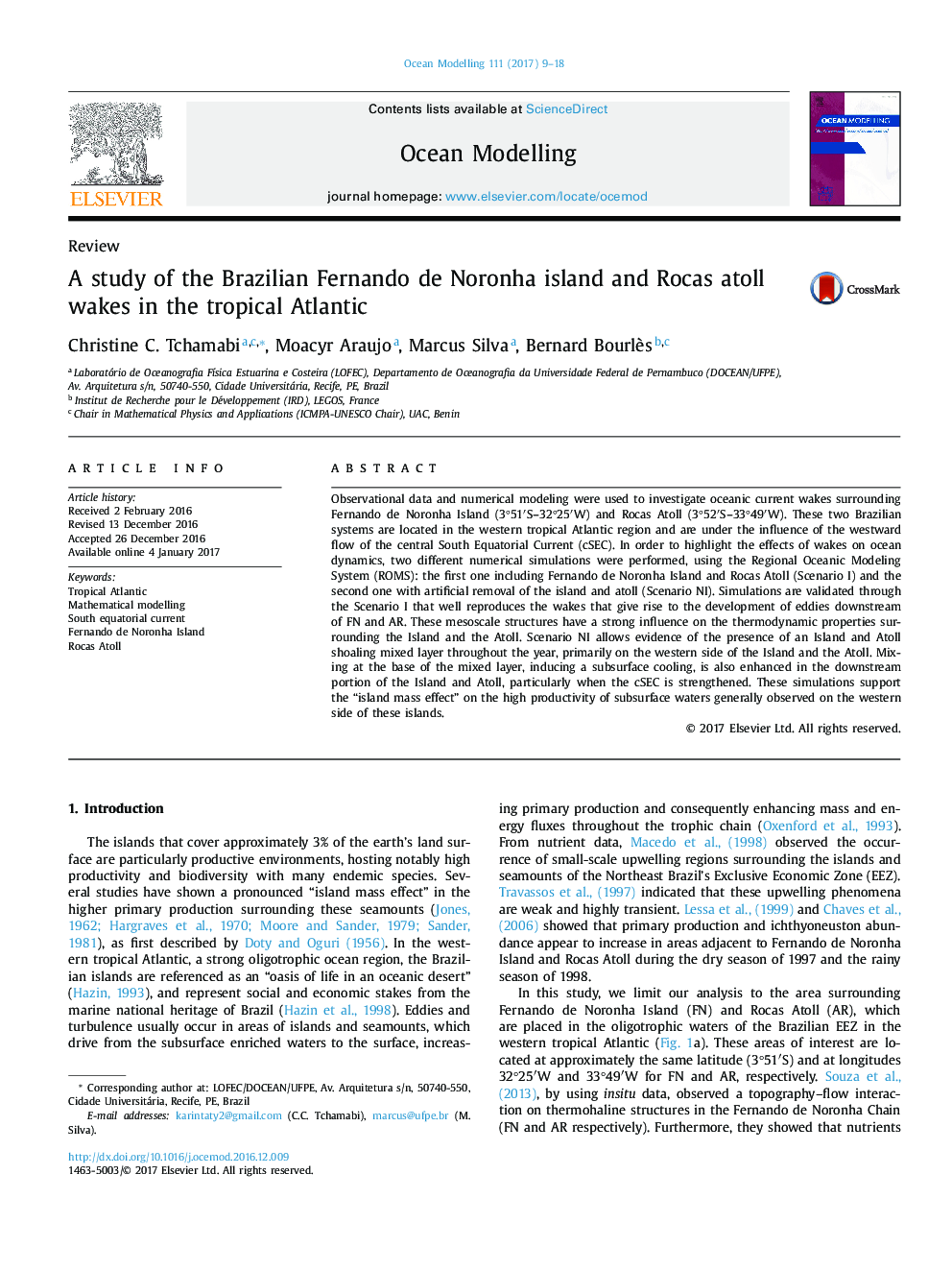| Article ID | Journal | Published Year | Pages | File Type |
|---|---|---|---|---|
| 5766387 | Ocean Modelling | 2017 | 10 Pages |
â¢Modeling is used to evaluate ocean wake on two tropical Atlantic islands.â¢The islands have the effect to elevate the thermocline downstream of both islands.â¢Subsurface cooling is generated by the mixing term downstream of islands.â¢The mixing is induced by the interaction of the cSEC with these islands.
Observational data and numerical modeling were used to investigate oceanic current wakes surrounding Fernando de Noronha Island (3°51â²S-32°25â²W) and Rocas Atoll (3°52â²S-33°49â²W). These two Brazilian systems are located in the western tropical Atlantic region and are under the influence of the westward flow of the central South Equatorial Current (cSEC). In order to highlight the effects of wakes on ocean dynamics, two different numerical simulations were performed, using the Regional Oceanic Modeling System (ROMS): the first one including Fernando de Noronha Island and Rocas Atoll (Scenario I) and the second one with artificial removal of the island and atoll (Scenario NI). Simulations are validated through the Scenario I that well reproduces the wakes that give rise to the development of eddies downstream of FN and AR. These mesoscale structures have a strong influence on the thermodynamic properties surrounding the Island and the Atoll. Scenario NI allows evidence of the presence of an Island and Atoll shoaling mixed layer throughout the year, primarily on the western side of the Island and the Atoll. Mixing at the base of the mixed layer, inducing a subsurface cooling, is also enhanced in the downstream portion of the Island and Atoll, particularly when the cSEC is strengthened. These simulations support the “island mass effect” on the high productivity of subsurface waters generally observed on the western side of these islands.
